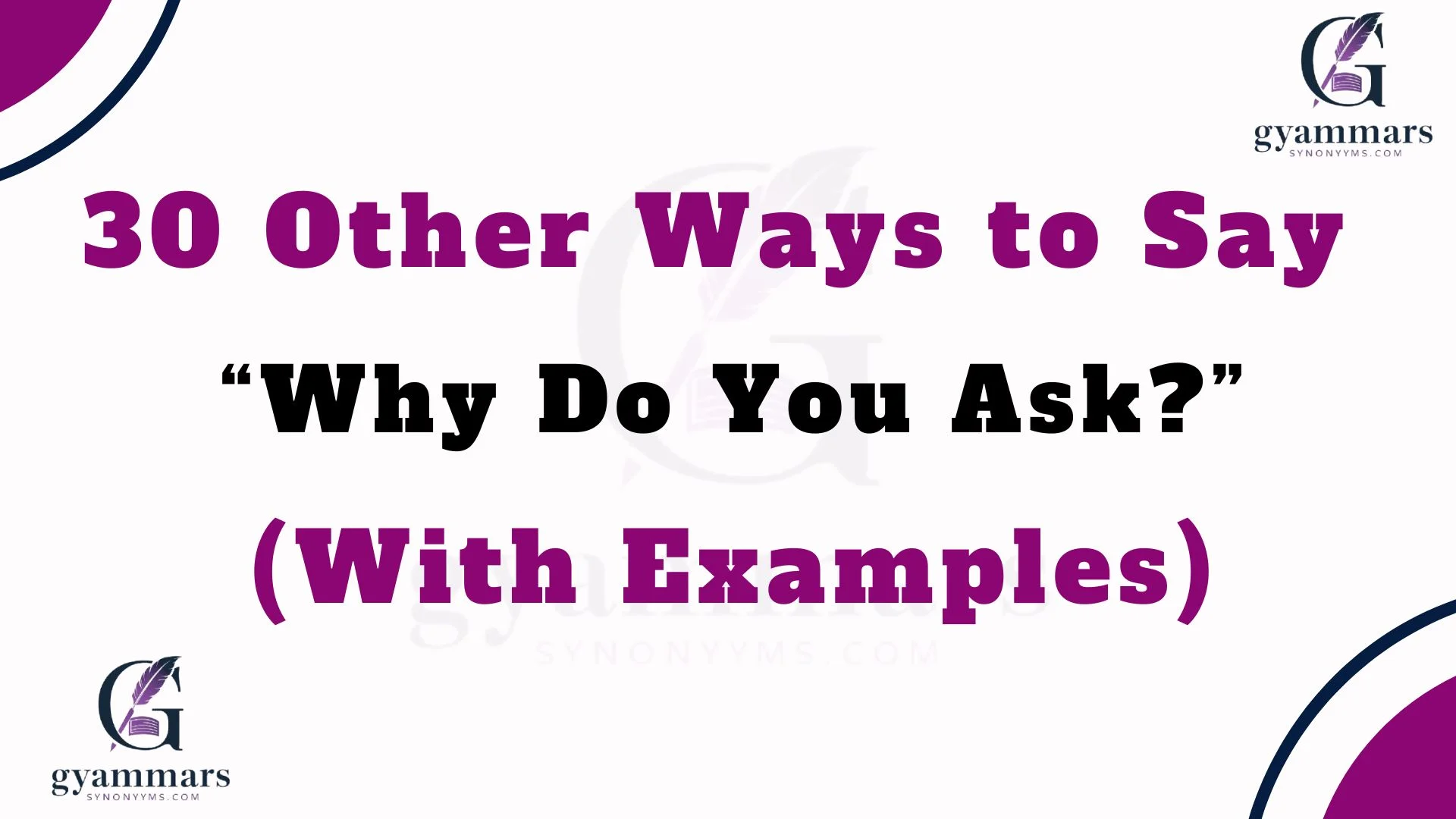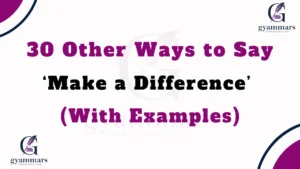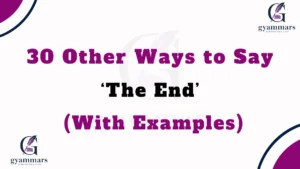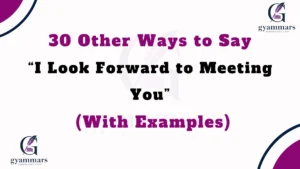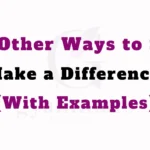Finding the right words to express curiosity without sounding dismissive or defensive can make a huge difference in conversations. Instead of defaulting to “Why do you ask?”, which sometimes may come across as blunt, there are warmer and more thoughtful alternatives. These expressions can help you show genuine interest, care, or openness—making your communication feel more personal, empathetic, and meaningful.
Below, you’ll find 30 alternatives, each with its definition, detailed explanation, real-life examples, best use, tone, and additional notes.
What Does “Why Do You Ask?” Mean?
The phrase “Why do you ask?” is usually a way of inquiring about someone’s reason or intention behind a question. While it can sound neutral, tone and context often determine whether it comes off as curious, polite, suspicious, or defensive.
Is It Professional/Polite to Say “Why Do You Ask?”
In professional or formal settings, “Why do you ask?” can sometimes feel too direct or skeptical. A more polished alternative, like “Just wondering what made you curious” or “Could you tell me a bit more about your question?”, may sound softer and more respectful.
Pros and Cons of Saying “Why Do You Ask?”
Pros:
- Quick and straightforward
- Shows curiosity
- Easy to understand
Cons:
- Can sound defensive or suspicious
- May unintentionally create distance
- Lacks warmth in sensitive situations
Synonyms For “Why Do You Ask?”
- What made you curious?
- I’d love to know what got you thinking about that.
- Is there a reason you ask?
- Just wondering what’s behind the question.
- May I ask what prompted that question?
- I’m curious what made you ask that.
- What sparked that question?
- Can I ask what’s on your mind?
- That’s an interesting question—what inspired it?
- Mind if I ask what led you to that?
- What made that come to mind?
- Could you tell me what you’re thinking about?
- I’d like to hear what made you ask.
- What’s the story behind that?
- Just curious where that question came from.
- Could you share what made you ask?
- What’s got you thinking about that?
- I’d like to understand where you’re coming from.
- That’s a thoughtful question—what brought it up?
- What’s making you think about that today?
- Just curious—what’s behind the question?
- I’d love to know your reason for asking.
- Can you tell me what made you curious?
- That’s a great question—what led you to it?
- What got you thinking about this?
- I’d like to hear more about what’s on your mind.
- I’m wondering what brought that question up.
- Could you share what’s behind your question?
- I’m curious where that idea came from.
- That’s an interesting thought—what made you ask?
1. What made you curious?
Definition: Asking about the motivation behind their question.
Detailed Explanation: This phrase shows interest in their thought process without sounding defensive.
Scenario Example:
- Friend: “Do you like hiking?”
- You: “What made you curious?”
Best Use: Personal conversations where curiosity feels genuine. Tone: Warm, friendly. Additional Notes: Great for casual, open dialogue.
2. I’d love to know what got you thinking about that.
Definition: Expresses warmth and eagerness to understand.
Detailed Explanation: This phrase makes the other person feel valued for sharing.
Scenario Example:
- Colleague: “Do you like working remote?”
- You: “I’d love to know what got you thinking about that.”
Best Use: Work and personal settings. Tone: Caring, engaging. Additional Notes: Encourages deeper conversation.
3. Is there a reason you ask?
Definition: Seeks clarification gently.
Detailed Explanation: Softer than “Why do you ask?” but still clear.
Scenario Example:
- Neighbor: “Are you moving soon?”
- You: “Is there a reason you ask?”
Best Use: Neutral or slightly formal conversations. Tone: Balanced. Additional Notes: Works in cautious contexts.
4. Just wondering what’s behind the question.
Definition: Acknowledges curiosity while probing lightly.
Detailed Explanation: Shows non-judgmental curiosity.
Scenario Example:
- Friend: “Are you free this weekend?”
- You: “Just wondering what’s behind the question.”
Best Use: Friendly contexts. Tone: Casual, open. Additional Notes: Prevents sounding defensive.
5. May I ask what prompted that question?
Definition: A polite way to inquire about their reason.
Detailed Explanation: This is respectful and professional.
Scenario Example:
- Boss: “Have you thought about leaving?”
- You: “May I ask what prompted that question?”
Best Use: Work or formal conversations. Tone: Polite, cautious. Additional Notes: Helps keep professionalism intact.
6. I’m curious what made you ask that.
Definition: Expresses interest directly.
Detailed Explanation: Shows natural curiosity without suspicion.
Scenario Example:
- Sibling: “Do you believe in fate?”
- You: “I’m curious what made you ask that.”
Best Use: Personal, thoughtful conversations. Tone: Warm, reflective. Additional Notes: Encourages honesty.
7. What sparked that question?
Definition: Suggests light, friendly curiosity.
Detailed Explanation: Indicates the questioner’s words sparked your interest.
Scenario Example:
- Colleague: “Do you like public speaking?”
- You: “What sparked that question?”
Best Use: Friendly or casual workplace chats. Tone: Curious, approachable. Additional Notes: Fun and engaging.
8. Can I ask what’s on your mind?
Definition: Invites them to open up further.
Detailed Explanation: Puts the focus on their thoughts.
Scenario Example:
- Friend: “Are you close with your boss?”
- You: “Can I ask what’s on your mind?”
Best Use: Conversations where sensitivity is needed. Tone: Gentle, caring. Additional Notes: Good for emotional contexts.
9. That’s an interesting question—what inspired it?
Definition: Shows appreciation while asking for context.
Detailed Explanation: Acknowledges the question as worthwhile.
Scenario Example:
- Student: “Why do you meditate?”
- Teacher: “That’s an interesting question—what inspired it?”
Best Use: Educational, mentoring, thoughtful talks. Tone: Respectful, engaging. Additional Notes: Adds a compliment.
10. Mind if I ask what led you to that?
Definition: Softens curiosity with politeness.
Detailed Explanation: Suggests openness but with respect for boundaries.
Scenario Example:
- Co-worker: “Do you plan on transferring?”
- You: “Mind if I ask what led you to that?”
Best Use: Workplace settings. Tone: Polite, careful. Additional Notes: Keeps professionalism intact.
11. What made that come to mind?
Definition: Seeks the thought process.
Detailed Explanation: Invites them to share background naturally.
Scenario Example:
- Friend: “Do you want kids someday?”
- You: “What made that come to mind?”
Best Use: Informal, friendly chats. Tone: Relaxed, curious. Additional Notes: Softens sensitive topics.
12. Could you tell me what you’re thinking about?
Definition: Encourages sharing thoughts openly.
Detailed Explanation: This is open-ended and caring.
Scenario Example:
- Partner: “Do you like your job?”
- You: “Could you tell me what you’re thinking about?”
Best Use: Deep conversations. Tone: Gentle, empathetic. Additional Notes: Perfect for close relationships.
13. I’d like to hear what made you ask.
Definition: Expresses genuine interest.
Detailed Explanation: Signals value for their perspective.
Scenario Example:
- Friend: “Do you like living here?”
- You: “I’d like to hear what made you ask.”
Best Use: Friendly and caring chats. Tone: Warm, affirming. Additional Notes: Builds trust.
14. What’s the story behind that?
Definition: Seeks context in a storytelling way.
Detailed Explanation: Invites them to share background or reason.
Scenario Example:
- Co-worker: “Do you travel a lot?”
- You: “What’s the story behind that?”
Best Use: Social conversations. Tone: Engaging, light. Additional Notes: Adds curiosity flair.
15. Just curious where that question came from.
Definition: Honest, casual curiosity.
Detailed Explanation: Makes you sound non-defensive.
Scenario Example:
- Neighbor: “Do you garden?”
- You: “Just curious where that question came from.”
Best Use: Informal chats. Tone: Relaxed, friendly. Additional Notes: Keeps it light.
16. Could you share what made you ask?
Definition: A polite request for context.
Detailed Explanation: Clear and respectful.
Scenario Example:
- Colleague: “Are you interviewing elsewhere?”
- You: “Could you share what made you ask?”
Best Use: Professional settings. Tone: Respectful, curious. Additional Notes: Balances boundaries.
17. What’s got you thinking about that?
Definition: Points to their thought process.
Detailed Explanation: Suggests warmth and attentiveness.
Scenario Example:
- Friend: “Do you ever miss school?”
- You: “What’s got you thinking about that?”
Best Use: Friendly settings. Tone: Curious, empathetic. Additional Notes: Great for bonding.
18. I’d like to understand where you’re coming from.
Definition: Shows openness and care.
Detailed Explanation: A more empathetic reframe.
Scenario Example:
- Partner: “Do you think we’ll move someday?”
- You: “I’d like to understand where you’re coming from.”
Best Use: Emotional or sensitive talks. Tone: Caring, thoughtful. Additional Notes: Best for close connections.
19. That’s a thoughtful question—what brought it up?
Definition: A compliment plus inquiry.
Detailed Explanation: Shows respect for their curiosity.
Scenario Example:
- Student: “Why did you choose this career?”
- Teacher: “That’s a thoughtful question—what brought it up?”
Best Use: Teaching, mentoring, or personal chats. Tone: Encouraging, warm. Additional Notes: Makes the asker feel valued.
20. What’s making you think about that today?
Definition: Focuses on the timing of the question.
Detailed Explanation: Suggests care about their current mindset.
Scenario Example:
- Friend: “Do you think about changing jobs?”
- You: “What’s making you think about that today?”
Best Use: Close relationships. Tone: Caring, supportive. Additional Notes: Adds immediacy.
21. Just curious—what’s behind the question?
Definition: Neutral but friendly.
Detailed Explanation: Softens curiosity with “just curious.”
Scenario Example:
- Neighbor: “Do you like your car?”
- You: “Just curious—what’s behind the question?”
Best Use: Casual chats. Tone: Light, conversational. Additional Notes: Keeps it low-pressure.
22. I’d love to know your reason for asking.
Definition: Expresses appreciation for their perspective.
Detailed Explanation: Invites thoughtful sharing.
Scenario Example:
- Friend: “Do you cook often?”
- You: “I’d love to know your reason for asking.”
Best Use: Friendly talks. Tone: Warm, respectful. Additional Notes: Encourages openness.
Also Read This : 30 Other Ways to Say ‘Keep Up the Good Work’ (With Examples)
23. Can you tell me what made you curious?
Definition: Direct and clear.
Detailed Explanation: Combines curiosity with politeness.
Scenario Example:
- Co-worker: “Do you enjoy management?”
- You: “Can you tell me what made you curious?”
Best Use: Work or casual settings. Tone: Neutral, friendly. Additional Notes: Easy to use.
24. That’s a great question—what led you to it?
Definition: Adds praise to curiosity.
Detailed Explanation: Makes the other person feel validated.
Scenario Example:
- Student: “Why is mindfulness important?”
- Teacher: “That’s a great question—what led you to it?”
Best Use: Learning and mentoring. Tone: Respectful, uplifting. Additional Notes: Builds confidence.
25. What got you thinking about this?
Definition: Focused on their thought process.
Detailed Explanation: A relaxed, open version.
Scenario Example:
- Friend: “Do you believe in destiny?”
- You: “What got you thinking about this?”
Best Use: Informal, reflective talks. Tone: Warm, curious. Additional Notes: Very natural sounding.
26. I’d like to hear more about what’s on your mind.
Definition: Shows active interest.
Detailed Explanation: Encourages them to expand.
Scenario Example:
- Partner: “Do you see us moving abroad someday?”
- You: “I’d like to hear more about what’s on your mind.”
Best Use: Close or intimate settings. Tone: Caring, deep. Additional Notes: Great for emotional safety.
27. I’m wondering what brought that question up.
Definition: Natural, soft curiosity.
Detailed Explanation: Sounds open without pressure.
Scenario Example:
- Colleague: “Do you plan to apply for promotion?”
- You: “I’m wondering what brought that question up.”
Best Use: Work and personal life. Tone: Gentle, neutral. Additional Notes: Easy to adapt.
28. Could you share what’s behind your question?
Definition: Politely invites context.
Detailed Explanation: Professional yet approachable.
Scenario Example:
- Client: “Do you work with startups?”
- You: “Could you share what’s behind your question?”
Best Use: Work or professional settings. Tone: Polite, inquisitive. Additional Notes: Helps clarify intentions.
29. I’m curious where that idea came from.
Definition: Highlights their perspective.
Detailed Explanation: Makes it conversational and light.
Scenario Example:
- Friend: “Do you like astrology?”
- You: “I’m curious where that idea came from.”
Best Use: Social chats. Tone: Casual, warm. Additional Notes: Easy-going style.
30. That’s an interesting thought—what made you ask?
Definition: Compliment plus curiosity.
Detailed Explanation: Encourages them to open up while feeling valued.
Scenario Example:
- Friend: “Do you believe in luck?”
- You: “That’s an interesting thought—what made you ask?”
Best Use: Friendly and reflective talks. Tone: Warm, thoughtful. Additional Notes: Polite and affirming.
Conclusion
Finding 30 other ways to say “Why do you ask?” allows you to communicate curiosity with care and empathy. The right phrasing can make someone feel comfortable, valued, and understood, whether you’re in a professional meeting, chatting with friends, or having a deep personal talk. By choosing your words thoughtfully, you ensure your communication feels meaningful, warm, and respectful.

“Emma Brooke at Grammar Synonyms is your trusted source for mastering the art of language. Whether you’re looking for the perfect synonym, refining your grammar, or searching for that one ideal phrase, we’ve got you covered. With a wealth of tools and resources, Emma Brooke brings you creative solutions for all your writing needs, making sure your words always hit the mark. Unlock a world of language possibilities and elevate your writing with ease.”
